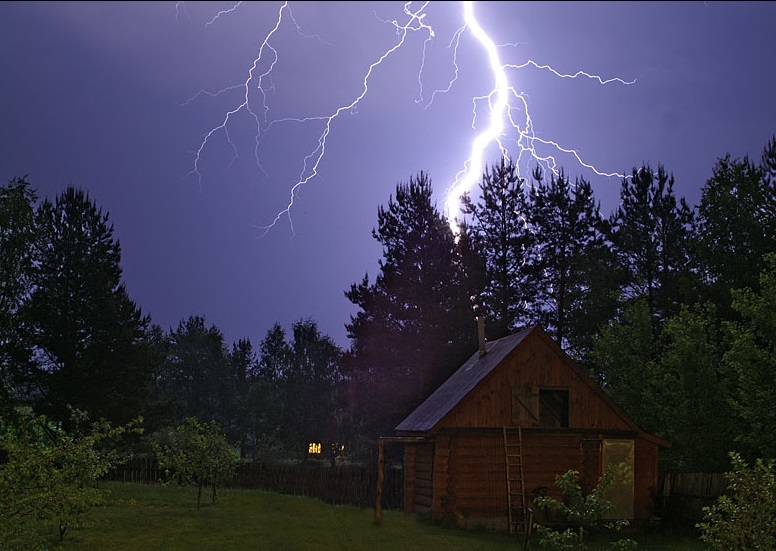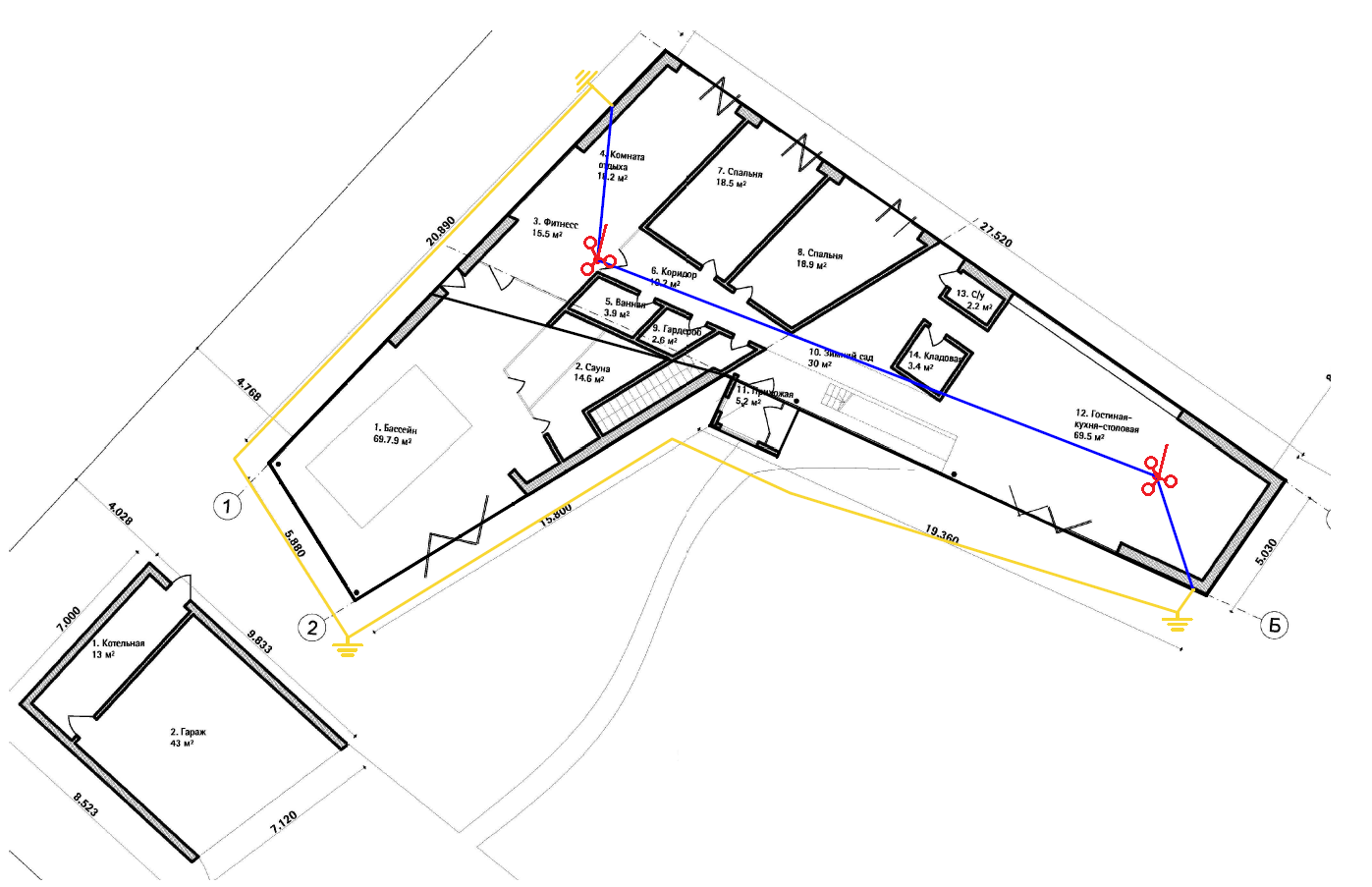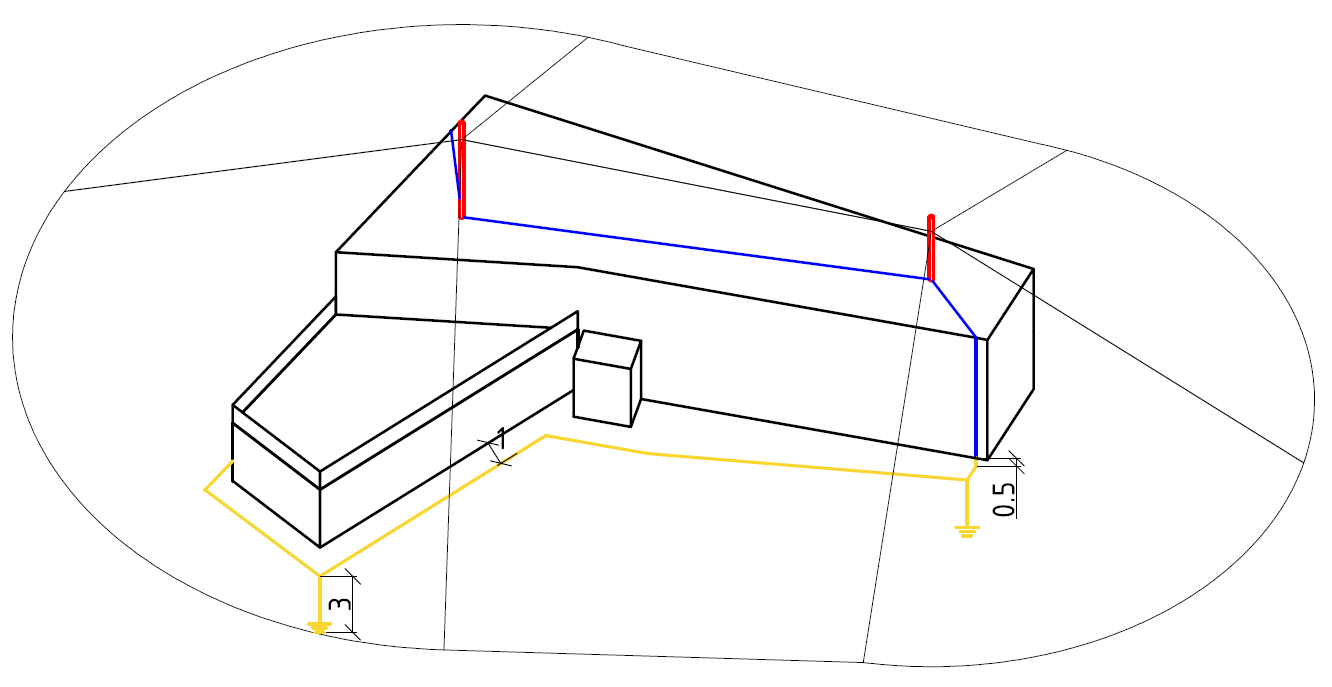Installation of grounding and lightning protection is recommended in accordance with EIC rev. 7. Chapter 1.7. It is a guarantee of the electrical safety of a dwelling, electrical appliances and, most importantly, human life and health.

Let's look at an example when no grounding was installed during construction of a residential building. In such a case, we can observe interaction between a person and electrical appliances that ends in a noticeable, although not strong, electric shock for the former. In this situation the human himself is "the grounding device". As in this case, the socket only has two wires: live and ground; there is no PE protection wire. Correspondingly, an electrical potential forms on the body of the electrical appliance and the current goes through the human to the ground. If grounding were installed, a breach in the isolation of an electrical appliance would not affect a person or be felt by them in any way, as the current would pass through the PE protection wire PE and go to "ground".
Often, a human himself is a carrier of static electricity; grounding does not allow the body of an electrical appliance to accumulate this static, instead passing it to "ground".
It is certain that grounding performs several important functions for the full and safe functioning of a single-family house. It protects against electrical shock, passes lightning current into the ground and carries out the role of protecting underground utility lines from electrical overload.
Single-family houses in turn are a preferable target for a lightning strike, as they equipped with additional utilities, such as wells and water-supply pipes, and are often constructed using combustible materials. A lightning strike can cause a fire not only in one certain house, but the whole suburban settlement.
How to do calculations for grounding and lightning protection in a single-family house correctly? Look at this practical example made by our technical expert.
Solution:
In accordance with EIC rev. 7. ,Chapter 1.7, IS 153-34.21.122-2003 "Instructions for the lightning protection of buildings, structures and industrial communications" (hereinafter IS) and AD 34.21.122-87 "Instructions for lightning protection of buildings and structures" (hereinafter AD).
Single-family houses are ordinary constructions in terms of lightning protection in accordance with IS and are assigned to category 3 by AD.
Buildings are protected against lightning strikes by lightning rods. A lightning rod is a device rising above a facility that diverts lightning current into the ground without entering the facility. It comprises an interception rod that directly receives the lightning discharge, a conductor wire and an earthing rod.
The set of measures to provide the required lightning protection is as follows:
- Installation of 2 lightning rods masts on 3 concrete bases - one 6-meter mast and one 4-meter mast. Installation is carried out on the flat surfaces of the house roof.
-
Two down conductors with copper-clad wire D=8 mm. The lightning rods are also interconnected to arrange two down conductors from each lightning rod. The down conductors should be located no closer than 3 m from entrances or in places where people cannot touch them. Down conductors should be fixed to the roof by the clamps GL-11711 (installed 0.6-1 m apart). The down conductor is to be fixed on the wall of the building by means of the clamps GL-11704A (installed 0.6-1 m apart). Connection and branching of the down conductors is carried out by means of clamps GL-11551M.
- The down conductor is connected to the output of the copper-bonded tape from the ground with the help of clamp GL-11562A.
- Installation of the grounding device, consisting of three vertical electrodes (copper-bonded rods, 14 mm in diameter) 3 m in length, connected by a horizontal electrode (copper-bonded tape d=10 mm). The distance between the vertical electrodes is at least 5 meters, the distance from the horizontal electrode to the building walls is 1 m and the depth is 0.5 m.

Figure 1. Layout of lightning protection and grounding elements
Protection zone corresponding to zone B of the AD

Figure 2. Lightning rod protection zone
List of necessary equipment:
Do you have any more questions? Please contact our Technical Centerat ZANDZ.com!














.jpg)

